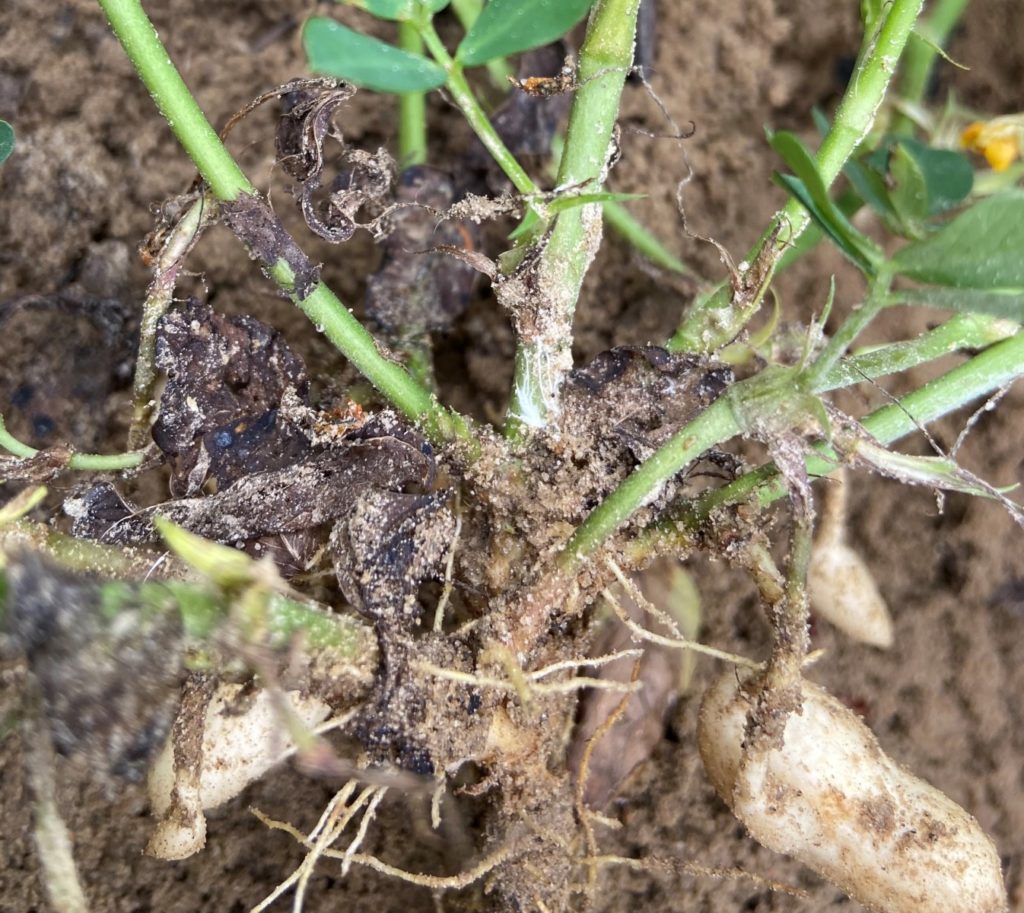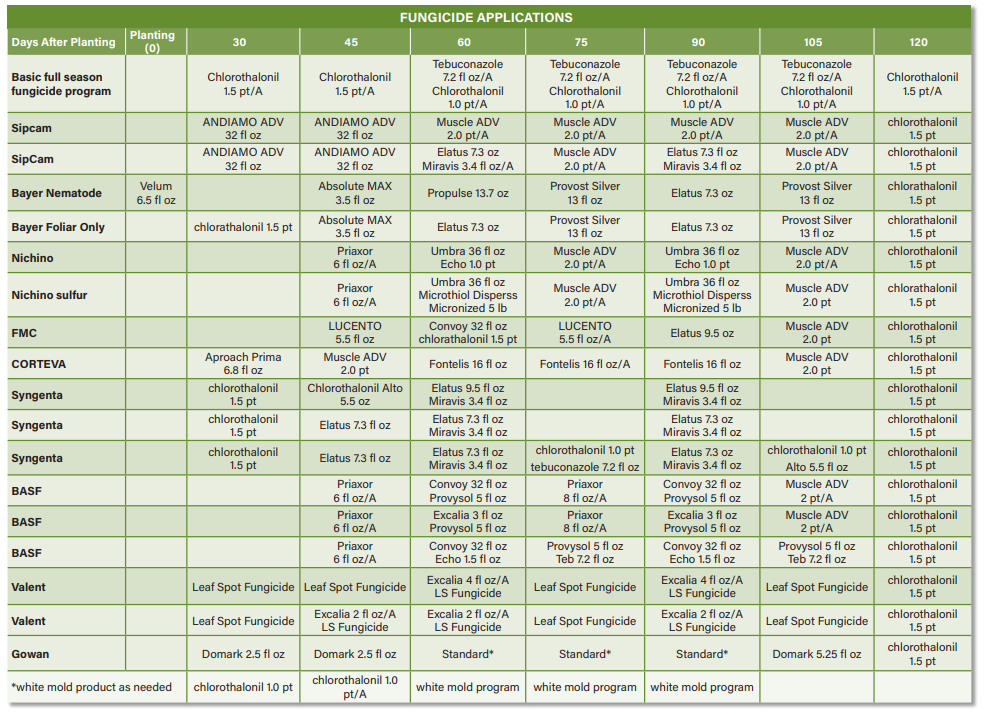
Bob Kemerait, UGA
In my 22 years as an Extension specialist at the University of Georgia, I cannot remember a season more favorable for white mold on peanuts than this one. (White mold, also known as “stem rot” and “southern blight”, is caused by the fungal pathogen Sclerotium rolfsii.) From pictures sent to me by county agents and consultants, it is clear that white mold is quickly developing not only on peanuts but, in some cases, on soybeans as well in Georgia. Conditions are perfect for the development of white mold and growers MUST be prepared to protect their crop in order to protect yield and profitability.
Current Conditions
Conditions are perfect now for development of white mold in the peanut crop for several important reasons.
- Hot daytime temperatures favor development of white mold.
- Dry conditions can make white mold more difficult to control because of lack of rainfall to wash the fungicide from the leaves to the crown of the plant. Also, white mold tends to go “underground” during hot and dry conditions where is even more difficult to control.
- High humidity favors development and spread of white mold.
- Intermittent rain showers tends to increase severity of white mold because a) these showers increase humidity and b) typically do not “beat” the white mold fungus down as often occurs in more prolonged downpours.
- Perhaps MOST importantly, white mold THRIVES during warm nights (above 75°F) with near 100% humidity. Such conditions are perfect for development and spread of white mold.
- Growth and development of the peanut crop supports and thick canopy of foliage. Individual “hits” of white mold begin with one plant that is infected, but with the thick canopy of leaves, the white mold fungus can move efficiently from one plant to the next. To minimize losses to white mold, it is critical to protect the plants from this spread with the effective use of fungicides.
Conditions in the 2021 season were less favorable for white mold than they are now. Why is that?
- Daytime and nighttime temperatures were generally cooler in 2021 than in 2022 and were less favorable for development and spread of white mold.
- Abundant rainfall in in 2021 not only cooled temperatures but also mechanically beat back the fungal pathogen, Sclerotium rolfsii, which helped to slow the spread of the disease.
What growers should be doing now.
- Scout fields for detection of white mold. Growers or scouts should check crown of wilted plants for presence of active white mold.
- Stay on a timely fungicide program. The choice of “best” product to use is a combination of level of risk to white mold in a field and cost of material.
- Time fungicide applications to capture irrigation or rainfall within 8 to 24 hours following application.
- Recognize that no fungicide program will eliminate individual “hits” of white mold but an effective fungicide program must stop white mold from spreading. An effective white mold program includes a) choice and rate of product, b) timing of application, and c) timing of irrigation or rainfall following the fungicide application.
- Best white mold products include Elatus, Excalia, Umbra, and Convoy then Fontelis and Provost Silver and then followed by Lucento, Priaxor, azoxystrobin and tebuconazole.
To look at a few fungicide programs check out the UGA Peanut (Waffle House Menu) Quick Reference 2022:
